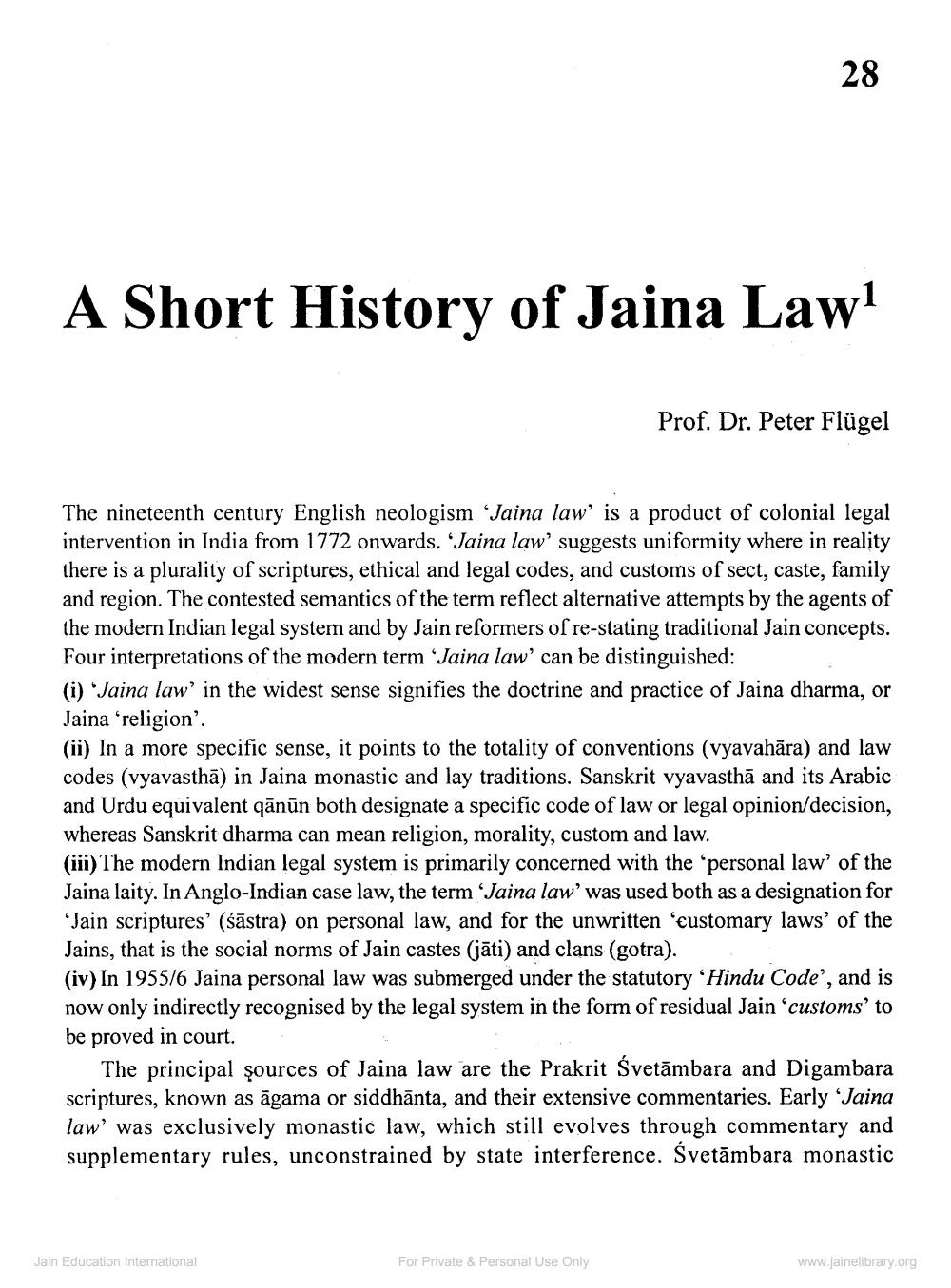________________
A Short History of Jaina Lawl
Prof. Dr. Peter Flügel
The nineteenth century English neologism Jaina law' is a product of colonial legal intervention in India from 1772 onwards. 'Jaina law' suggests uniformity where in reality there is a plurality of scriptures, ethical and legal codes, and customs of sect, caste, family and region. The contested semantics of the term reflect alternative attempts by the agents of the modern Indian legal system and by Jain reformers of re-stating traditional Jain concepts. Four interpretations of the modern term 'Jaina law' can be distinguished: (i) Jaina law' in the widest sense signifies the doctrine and practice of Jaina dharma, or Jaina ‘religion'. (ii) In a more specific sense, it points to the totality of conventions (vyavahāra) and law codes (vyavasthā) in Jaina monastic and lay traditions. Sanskrit vyavasthā and its Arabic and Urdu equivalent qānūn both designate a specific code of law or legal opinion/decision, whereas Sanskrit dharma can mean religion, morality, custom and law. (iii) The modern Indian legal system is primarily concerned with the personal law of the Jaina laity. In Anglo-Indian case law, the term 'Jaina law' was used both as a designation for 'Jain scriptures' (śāstra) on personal law, and for the unwritten 'eustomary laws' of the Jains, that is the social norms of Jain castes (jāti) and clans (gotra). (iv) In 1955/6 Jaina personal law was submerged under the statutory ‘Hindu Code', and is now only indirectly recognised by the legal system in the form of residual Jain 'customs' to be proved in court.
The principal sources of Jaina law are the Prakrit Svetāmbara and Digambara scriptures, known as āgama or siddhānta, and their extensive commentaries. Early 'Jaina law' was exclusively monastic law, which still evolves through commentary and supplementary rules, unconstrained by state interference. Svetāmbara monastic
Jain Education International
For Private & Personal Use Only
www.jainelibrary.org




